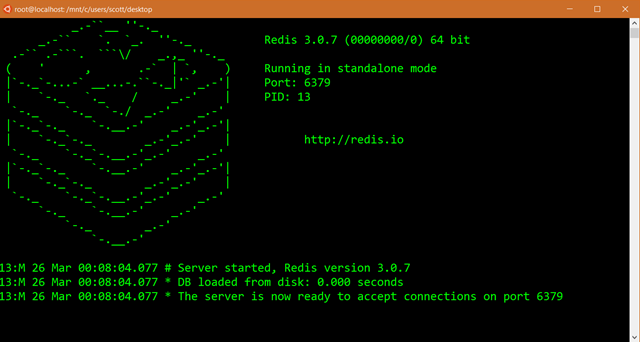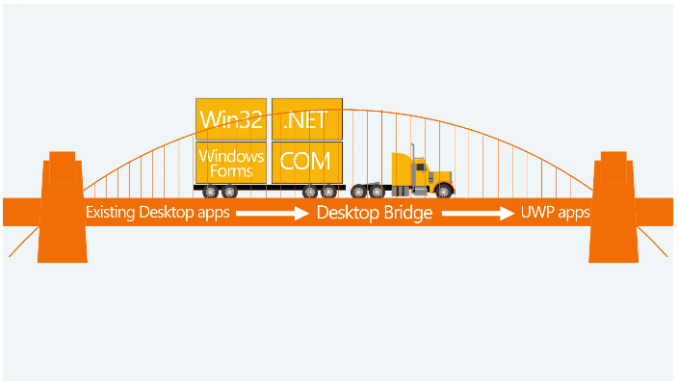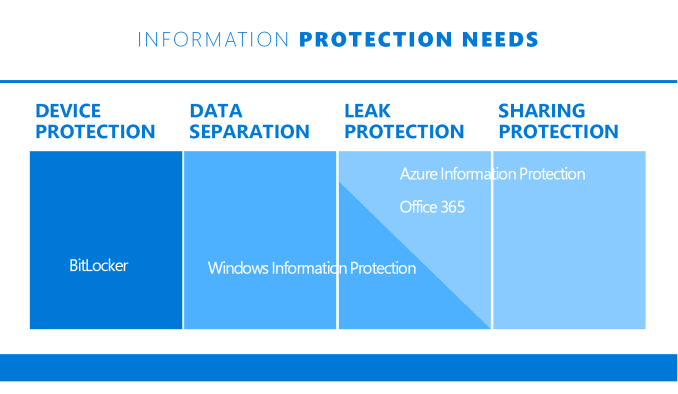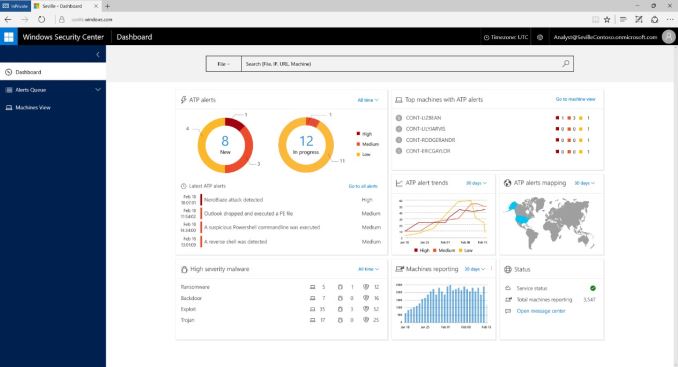Windows 10 Anniversary Update: The Road To Redstone
by Brett Howse on August 2, 2016 8:00 AM EST- Posted in
- Operating Systems
- Microsoft
- Windows 10
Developer and Enterprise Features
Bash shell
At their Build developer conference, Microsoft announced that the Bash shell would be available in Windows 10 with the Anniversary Update, and they have delivered. Bash has been available in the Insider Program for quite a while, so it’s been well tested already. For those wondering why Microsoft would go to the trouble of adding another shell, the goal is to make Windows 10 more friendly for web developers who often have toolchains in Bash.
Image Source: hanselman.com
Microsoft partnered with Canonical to provide user-mode binaries, so most of the commands which work in Ubuntu will work in Windows 10 as well. The Bash shell is not running Linux in a virtual machine behind the scenes either. This is Ubuntu binaries running on Windows 10.
For those that wanted to leverage open source toolkits but could not do it on Windows before, this should be a nice addition to Windows.
Centennial Apps
Project Centennial is Microsoft’s solution for existing Win32 apps being moved forward to the new Universal Windows App (UWP) platform. With the Anniversary Update, Microsoft is bringing official support for Centennial Apps on Windows 10, where as prior to this it was all part of the testing phase.
Once a Win32 or .NET app has been converted to UWP, it will have the ability to do push notifications and have a Live Tile, just like all UWP apps. The install process is much cleaner, and uninstalling ensures that all traces of the app are gone. A converted Win32 app can be transitioned to the new XAML layout as well, which would allow for scaling of the UI much easier than any sort of DPI method.
Converted apps can also be put in the store, and updated through the store. For those that prefer to offer the app in a more traditional download and install way, the converter creates an AppX package which can be loaded onto any Windows 10 PC.
The app will have a virtualized file system and registry, and it won’t work for apps that have to run as administrator, but there are certainly some upsides to having Win32 apps converted to UWP. We’ll have to see how this goes over time, since it’s a brand new feature. Certainly apps that are no longer developed will never move to this model, it’s a smart way to at least offer the UWP platform to traditional Win32 developers.
Enterprise Features
Microsoft can’t leave out the Enterprise, since that’s a huge part of their business. The Anniversary Update brings some updates here too. Things like Windows Hello which are also usable by consumers will of course be available, but there are a couple of features targeted specifically towards the enterprise.
The first is one that we’ve heard about for about as long as Windows 10 has been around: Windows Information Protection. This feature was previously known as Enterprise Data Protection, and it is a mechanism to prevent data leaks by employees, either wittingly or unwittingly. Files can be designated as Business files based on where they are located, or where they came from, and end-users won’t be able to copy those files or their contents without switching it to a personal file, and whether or not they can do that is controlled by policy through Mobile Device Management or System Center Configuration Manager.
We’ve discussed this in the past, but there’s a great TechNet article now that the feature is being made available with this update.
The other big enterprise feature is Windows Defender Advanced Threat Protection, and yes the name is a mouthful. WDATP will help administrators detect, investigate, and respond to attacks to their infrastructure. It combines a client built-in to Windows 10 along with cloud infrastructure to provide tools and dashboards to see what’s going on now, and what’s happened in the past. It should be a powerful tool for IT admins. You can read more at TechNet as well.














194 Comments
View All Comments
powerarmour - Wednesday, August 3, 2016 - link
Indeed, and likewise nor is it fair to say 'Chrome is a battery hog' when plainly isn't on a Chromebook.BurntMyBacon - Wednesday, August 3, 2016 - link
@powerarmour: "Indeed, and likewise nor is it fair to say 'Chrome is a battery hog' when plainly isn't on a Chromebook."Agreed. It's similar to how Safari is a much different program on MAC OS than it is anywhere else. It almost deserves a different name. Chrome is much different on a Chromebook than Windows. Certainly battery life issue are not the same for every platform and they are working to improve it. For instance, Android for a long time made use of Android browser rather than Chrome by default. While Chrome was a more fully featured browser, it also sucked far more energy to do its job. Now, the difference has depreciated to the point that Chrome is the default browser in newer Nexus devices. That said, android chrome still isn't the equal of the Windows and Linux versions and only the Windows version can be compared to Edge (which was the original topic of discussion here).
Murloc - Wednesday, August 3, 2016 - link
chromebooks are hardly relevant for most users, and the discussion is clearly about windows laptops since it's being compared to edge.nikon133 - Tuesday, August 2, 2016 - link
Also works better with touch, imho. I mostly use Chrome on my desktop and (docked) laptop... but on Surface, it is basically 100% Edge.faizoff - Tuesday, August 2, 2016 - link
As everyone have answered @retrospooty, I have an unbranded 10.1 tablet that has 2 GB RAM with an Intel Atom CPU Z3735F BayTrail-T 1.33GHz. So Edge works great on that but the only thing stopping me from using it was adblock.Even on my desktop Chrome is a memory hog where I find each tab takes about 150-250 mb of RAM and surprisingly recently rediscovered Firefox takes a total of 350 MB with at least 10 tabs open.
So yeah Edge is the fastest among them all in terms of initial load plus browsing but the ads.. the ads kill my experience.
Brett Howse - Tuesday, August 2, 2016 - link
As I said in the article, Edge renders text better than other browsers, especially on a high DPI device like Surface Pro 4 / Surface Book.Alexvrb - Wednesday, August 3, 2016 - link
That's a huge plus too... and that's AFTER the upgrades Google made to Chrome a while back in terms of text rendering. Couple years back Chrome's text rendering at ANY resolution was really mediocre.Socius - Wednesday, August 3, 2016 - link
Edge has the smoothest scrolling of any browser. It's also surprisingly fast, with ad-block enabled. The only downside to it is that there is no 100% popup block feature or addon.Lerianis - Monday, August 15, 2016 - link
Edge is great if you block ads.... especially VIDEO ads that even MSN loves to put 3-5 video ads ON THE SAME PAGE and slow Edge to a crawl.I finally did that in my hosts file for a short period and only rescinded that when websites started going to that blocking you from using their websites if you have adblock enabled.
andrejg - Tuesday, August 23, 2016 - link
I use Edge almost all the time, unless there is app or site, that doesn't support Edge. i found very few that I use besides some pages from bank, that use also external certification via smartcard... or so... Really, i just use Edge as it was installed and only few times i was forced to use IE for compatibility reasons... I have found Fox and Chrome to add only complitations for normal use unless there is something special, that needs that particular browser.